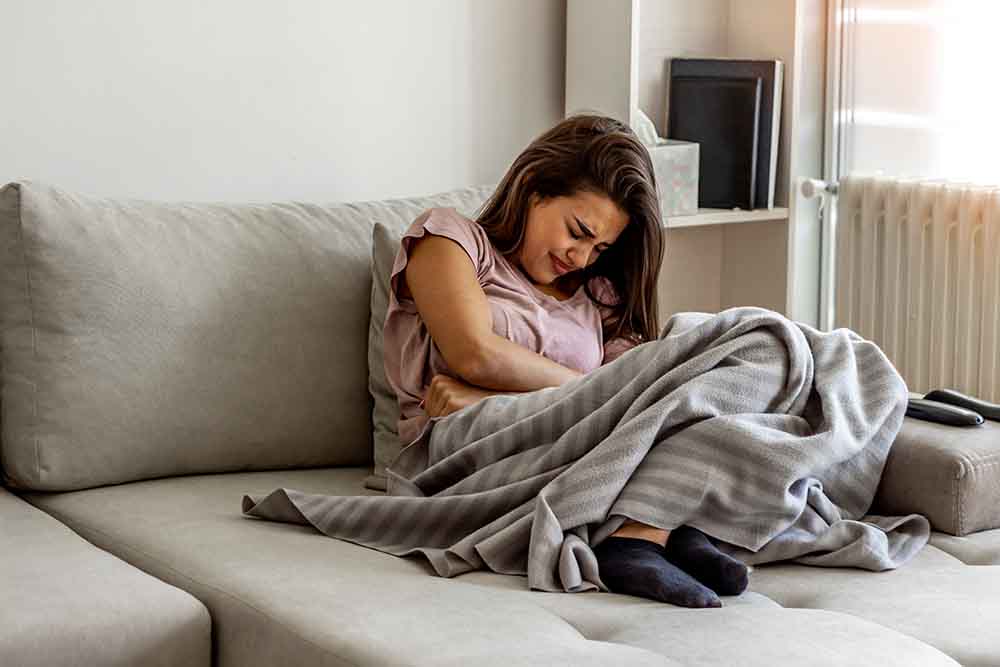All through her adolescence and early adulthood, model, television host, and activist, Padma Lakshmi, suffered agonising periods, with heavy bleeding, severe pain, and cramping. In an interview with People Magazine, she said, “I had to stay home several days a month from school. I missed a week of my life for 23 years. It’s embarrassing. It’s something that is deeply private and personal.”
It was only when she was 36 that Dr Tamer Seckin realised that these symptoms were not normal, and identified that she had a disorder called endometriosis. Gynaecologist Dr Gehna Iqbal says, “Endometriosis is a condition where the tissue that is found as the lining within the uterus also grows outside the uterus. This could be on your ovaries, fallopian tubes, and pelvis. Women who suffer from endometriosis have painful menstrual cycles that impact their lives negatively. They could experience painful intercourse, bloating, fatigue, and painful urination. The sad part is that it can impact any girl or woman of reproductive age, and goes on until menopause if left undiagnosed and untreated.”
In Padma Lakshmi’s case, her diagnosis was followed by surgery to remove the excess tissue. However, not all women can resolve endometriosis that easily.
This year marks the 30th anniversary of World Endometriosis Awareness Month. In 1993, The Endometriosis Association started the initiative to educate and inform women of this painful condition. Although there is a lot more awareness about its existence now, women still remain woefully unaware of how to manage and treat it. Worldwide, 200 million women are affected by endometriosis. Up to 10 per cent of women between the ages of 15 and 44 suffer (most of them in silence and unaware) with the excruciating symptoms of this disorder.
“Endometriosis could occur due to a variety of reasons,” says Dr Iqbal. “The most common of them is retrograde menstrual flow, where the tissue that is shed from the uterus falls through the fallopian tube into other areas. Genetics, hormonal imbalances, and auto-immune disorders could be other causes. There’s nothing much one can do to prevent endometriosis. But early detection and treatment can help alleviate the pain and help women lead a better quality of life earlier rather than later. A routine pelvic exam or ultrasound with a gynaecologist can be used to diagnose it, once you notice the symptoms.”
There is no cure for endometriosis yet, but medication and surgery can help control it to a large extent. “Surgery can help provide pain relief by removing the excess tissue,” says Dr Iqbal, “but this requires proper surgical planning, as the tissue may be scattered. Sometimes, hormone therapy is used to prevent ovulation and subsequent menstruation, but it is not recommended to use these on a long-term basis, as they may cause other complications.
“Contraceptives can also help suppress endometriosis, especially if having children is not on the agenda. Painkillers and anti-inflammatory drugs are also prescribed as pain management tools. However, each person’s case is unique, and endometriosis has a wide spectrum of symptoms and impacts. Thus, each case needs to be treated differently, depending on the individual, and by a qualified doctor who has examined your case thoroughly.”

Not everyone with endometriosis wants children. Some of them just want the pain to go away, and be able to live a normal, happy, fulfilling life every day of the month. But for those who do want children, living with endometriosis can be an uphill battle. As many as 30-50 per cent of women with endometriosis globally are unable to conceive.
Thara Subramanian, a 42-year chartered accountant, was told for many years that she would be unable to have a child because of her endometriosis. “I was diagnosed at the age of 22 and married my partner at 27. We consulted various fertility specialists and a decade ago, IUI was ruled out for us because of some complications. However, egg freezing was recommended to me as an option, which I grabbed with both hands. It worked, and today, we have a healthy eight-year-old child. So the trials were worth it.
“I understand that egg freezing (and other fertility treatments) are expensive options, which many women may not be able to afford. Also, I was lucky enough to be diagnosed young and meet the person I wanted to have children with before I turned 30. My advice to women with endometriosis is that don’t waste time once they get diagnosed. If you’re sure you want children, consult a fertility expert and figure out your options immediately, to maximise your chances of conceiving.”
In a world where women’s basic healthcare needs are still to be met, endometriosis puts an additional financial burden on them. Firstly, there is healthcare to be paid for, along with fertility and child planning. Indirectly, reduced quality of work and days off the job also make for financial deficits. There is also the social stigma of living with painful periods, probable infertility, and other complications that may arise.
When strong women like Padma Lakshmi normalise conditions like endometriosis, it helps break some of the stigmas around it. Alexa Chung, Susan Sarandon, Amy Schumer, and Dolly Patron are other notable names that have opened up about their struggles with this disorder, and how they’ve navigated it. One of the earliest diagnosed celebrities to come out in the open about it was Whoopi Goldberg. She had said, “There is nothing dirty about it. No religious group is going to be pissed if you discuss this. Because if you don’t discuss it, many more women are going to find themselves unable to have children or find themselves close to dying because it’s led to something else."